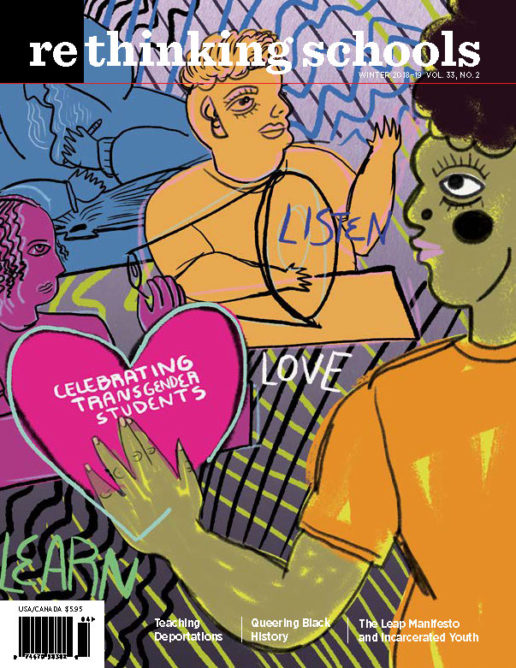“What Kind Are You?”
Transgender Characters in Children’s Literature
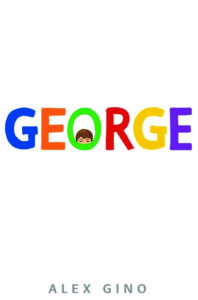
Oregon Battle of the Books (OBOB) is a statewide voluntary reading program that celebrates young people’s love of stories. Each year, schools register for the program and students who wish to participate form teams and read from a list of 16 books for their division: 3rd-5th grade, 6th-8th grade, or 9th-12th grade. Teams answer questions that test their knowledge and understanding of the books. Each participating school sends one winning team to a regional competition, and each region then sends the winning team on to a statewide competition.
A volunteer committee of teachers and librarians reviews title recommendations gathered from public input in order to create the reading lists for each division. The nomination lists are open to public feedback before final selections are made.
This past year, volunteers placed Alex Gino’s George on the 3rd- to 5th-grade reading list for the 2018-2019 competition. George is an award-winning novel about a transgender girl’s experience coming out to her family, her best friend, and her school. When OBOB published the final selection last spring, some people objected and tried to have George removed.
Some of those who wished to remove George denied that it was because of the book’s transgender protagonist, and instead cited concerns over passing references to dirty magazines and characters who erased their internet search history in order to hide that information from their parents.
Others were blatant in their discrimination. The author of a petition to remove George from the OBOB reading list wrote, “Most importantly, it introduces and attempts to normalize the idea that people can change gender freely, that it has nothing to do with your biological sex, physical makeup, or chromosomes.” As if it would be a bad thing for children to know and understand that one’s gender may not correspond with one’s biological sex at birth.
Despite the controversy, OBOB chose to keep George on the 3rd-5th grade reading list. Its inclusion caused three school districts to drop out of the competition, even though students are not required to read all the books on the list in order to participate in the program.
Others were glad to see the book on the list, including my school, which published a letter in support of its inclusion. Parts of the letter read:
We celebrate equity, diversity, and inclusion and are continually working to provide our students with an educational experience that promotes open-mindedness and an understanding of different perspectives. We also recognize the importance of children seeing themselves in the books that they read, as well as reading books about people whose experiences differ from their own. . . .
We stand by the communities represented in the characters and authors of this years’ OBOB selection, including the transgender community. We stand by the OBOB committee in their work to promote reading inclusive and culturally responsive books. And, if you’ve read Alex Gino’s George, you’ll know what we mean when we say we stand by Melissa.
We shared this statement because we believe everyone should have the freedom to choose what they want to read. We did this because we understand the importance of providing what Rudine Sims Bishop first described as “window and mirror books.” We did this because we know that sometimes stories help save lives.
According to the National Center for Transgender Equality, at some point during their lives, 41 percent of transgender people in the United States will attempt to take their own life.
One way we can fight these statistics is by showing transgender children that their lives, their experiences, matter. And one way we can begin to do this is by simply sharing a story.
More Stories to Share
In addition to George, there are several other children’s books that celebrate the lives of transgender people and that are great for classroom use. One is Ami Polonsky’s Gracefully Grayson, which like George, features a transgender character who is able to finally express her true identity through taking on a female role in the school play.
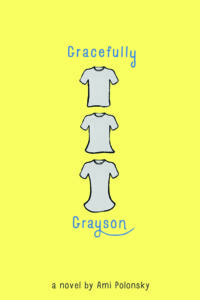
In this novel for middle school and mature upper elementary students, Grayson does not have the support of a close friend like the main character does in George. She lives with her aunt, uncle, and cousin, who do not understand or support Grayson’s gender identity. She also faces bullying and violence at school. But her drama teacher sees her for who she is. Two classmates step in to offer aid and recognition. And the discovery of a bundle of letters between Grayson’s mother and grandmother reveal that her parents, who died when she was 3, supported young Grayson when she identified and presented herself as a girl. Despite some heartbreaking and frightening moments, readers are left with a sense of hope for Grayson and her journey ahead.
Such feelings of hope are essential for young readers, which is why Lily and Dunkin is a welcome addition to the growing repertoire of young people’s literature featuring transgender characters. Lily, born as Tim and still presenting as Tim at school, has the support of her best friend, her sister, and her mother. This is not to say that her life is easy. She endures verbal and physical bullying at school, and her father does not understand or recognize Lily for who she is.
Her newest friend, Dunkin, struggles with mental illness. He also chooses not to stand up for Lily at school, but rather hangs out with his basketball teammates, who are also Lily’s tormentors. But their simultaneous journeys toward acceptance are part of the hope this book offers, and Lily’s father’s journey toward understanding provides a powerful and tender statement of hope as well.
M. G. Hennessey’s The Other Boy also offers a glimpse into the life of a transgender child. In this novel for older elementary and middle school students, Shane has a fresh start at a new school where no one knows that his sex was categorized as female at birth. This gives Shane the feeling that he is being seen for who he truly is, that he has a place where he belongs. To his new best friend and to his crush at school, Shane is just a boy who loves playing baseball and drawing comics. Shane doesn’t share his sex at birth. He doesn’t tell his friends about his struggle to find acceptance from his father. But when a bully shares a photo of Shane from before he transitioned, Shane’s new sense of belonging begins to crumble. He fears he’s lost everything. With the support of his mother, a friend from a group for transgender youth, and the surprising loyalty of his best friend and their baseball team, Shane finds he is far from alone, and indeed has a place where he belongs.
Another book that portrays gender-fluid characters and challenges gender binaries is Jen Wang’s new graphic novel, The Prince and the Dressmaker. Set in what is described as “Paris at the dawn of the modern age,” Prince Sebastian hires a talented seamstress named Frances to make lavish dresses that he dons as Lady Crystallia, Paris’ fashion icon. The only problem is that no one knows that he is Lady Crystallia, which in turn means that no one can know that Frances designed the dresses. Despite the affection that has grown between Sebastian and Frances, the secrecy tears them apart. After his identity as Lady Crystallia is painfully revealed, Sebastian apologizes to his parents, “I’m sorry I never told you the truth. But this is who I am. I’m a prince who likes dresses.” In turn, his family, and the king in particular, not only accept the prince for who he is, but very publicly stand in support of Prince Sebastian, Frances, and Lady Crystallia.
While all of these books written for older elementary and middle school students would make great additions to classroom and school libraries, we must start introducing such stories long before students are reading chapter books on their own. Many children are aware of their gender identity at a young age. And regardless of how they identify or express themselves, many young children grapple with societal and peer messages about gender. Because of this, we must start sharing stories at a young age.
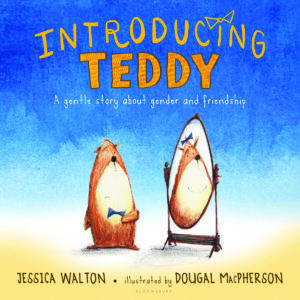
One book to spark conversations in classrooms and at home is
Introducing Teddy: A Gentle Story About Gender and Friendship by Jessica Walton. In this book, Thomas the teddy bear bravely shares her true identity as Tilly, and is loved and accepted for who she is. For some children, a teddy bear character may provide a safe and familiar entry point to talk about real-life situations, while other children may benefit from a more concrete story about a real person.
I Am Jazz, co-authored by Jazz Jennings and Jessica Herthel, tells the story of Jazz’s early years. From correcting her mother at a very young age saying, “No, Mama. Good GIRL!” to coming out at school, readers learn about the challenges, relief, joy, and acceptance that were all a part of Jazz’s journey. I Am Jazz is an accessible story through which all young children can learn about Jazz’s experience as a transgender child. It is also a powerful book for transgender children who may see themselves reflected in the story and in the author.
In Jessica Love’s debut picture book, Julián Is a Mermaid, young Julián becomes mesmerized by a group of women dressed as mermaids. Seeing these stunning mermaids on the subway with his abuela, Julián imagines himself transformed into a mermaid, complete with swirling dark curls and a pink and gold tail. Later, while his abuela takes a bath, Julián creates his own beautiful mermaid costume. There’s a tense moment when Abuela emerges from the bathtub and the reader, along with Julián, is uncertain what her reaction will be. Thankfully, we find that Abuela gives Julián just what he needs — love, acceptance, and a long string of pink beads to make his transformation complete. Though Julián does not identify as transgender in this book, Julián Is a Mermaid is a beautiful story about gender expression, self-love, familial recognition, and community connections.
Airlie Anderson’s Neither is another book that challenges binary systems. Neither is a fantastical story set in the Land of This and That where everyone is either a blue rabbit or a yellow bird. When an egg hatches and out comes someone green with a beak, a cottontail, wings and long ears, the other animals ask, “What kind are you?” Is this new hatchling Both? Are they Neither? If they don’t fit into the Land of This and That, where do they fit in? Although not explicitly about gender identity or even gender expression, Neither nevertheless provides a great entry point into conversations about gender identity and the fallacy of a binary system.
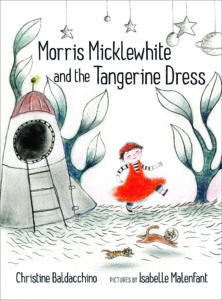
Another picture book featuring a character with fluid gender expression is Morris Micklewhite and the Tangerine Dress by Christine Baldacchino. There’s so much that Morris loves about school, but his favorite part is the dress-up center, and in particular a tangerine dress that “reminds him of tigers, the sun, and his mother’s hair.” After several days of children teasing him, Morris develops a tummy ache and stays home from school. With his mother’s tender care and the healing power of expressing himself through painting, Morris is able to return to school where he dons the crinkly tangerine dress, builds his own spaceship, and teaches his classmates what he already knew in his heart, that “it didn’t matter if astronauts wore dresses or not. The best astronauts were the ones who knew where all the good adventures were hiding.” When a classmate confronts him, saying “Boys don’t wear dresses.” Morris smiles and says, “This boy does.”
Oregon Battle of the Books is leading the way in getting such books into the hands of young readers in Oregon. Despite the controversy over George’s inclusion on this year’s list, more than 400 schools registered to participate at the 3rd- to 5th-grade level.
That’s a lot of students reading George this school year, and a lot of potential for the ripple effect of compassion and acceptance that reading such books may create.
References
- Anderson, Airlie. 2018. Neither. Little, Brown and Company.
- Baldacchino, Christine. 2014. Morris Micklewhite and the Tangerine Dress. Groundwood Books.
- Gephart, Donna. 2016. Lily and Dunkin. Delacorte Press.
- Gino, Alex. 2015. George. Scholastic Press.
- Hennessey, M. G. 2016. The Other Boy. Harper.
- Herthel, Jessica, and Jennings, Jazz. 2014. I Am Jazz. Dial Books.
- Love, Jessica. 2018. Julin Is a Mermaid. Candlewick Press.
- Polonsky, Ami. 2014. Gracefully Grayson. Hyperion.
- Walton, Jessica. 2016. Introducing Teddy: A Gentle Story About Gender and Friendship. Bloomsbury.
- Wang, Jen. 2018. The Prince and the Dressmaker. First Second.

